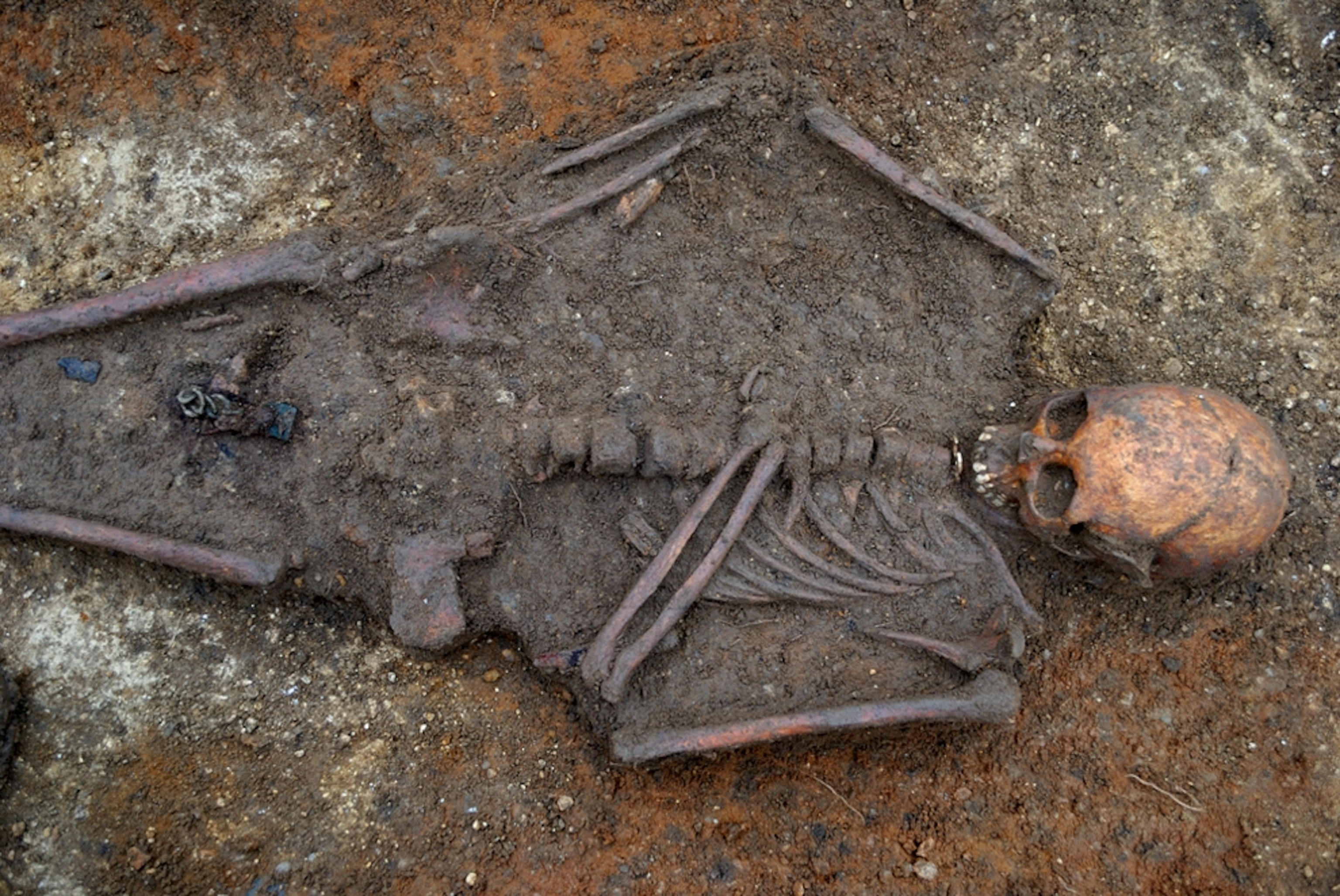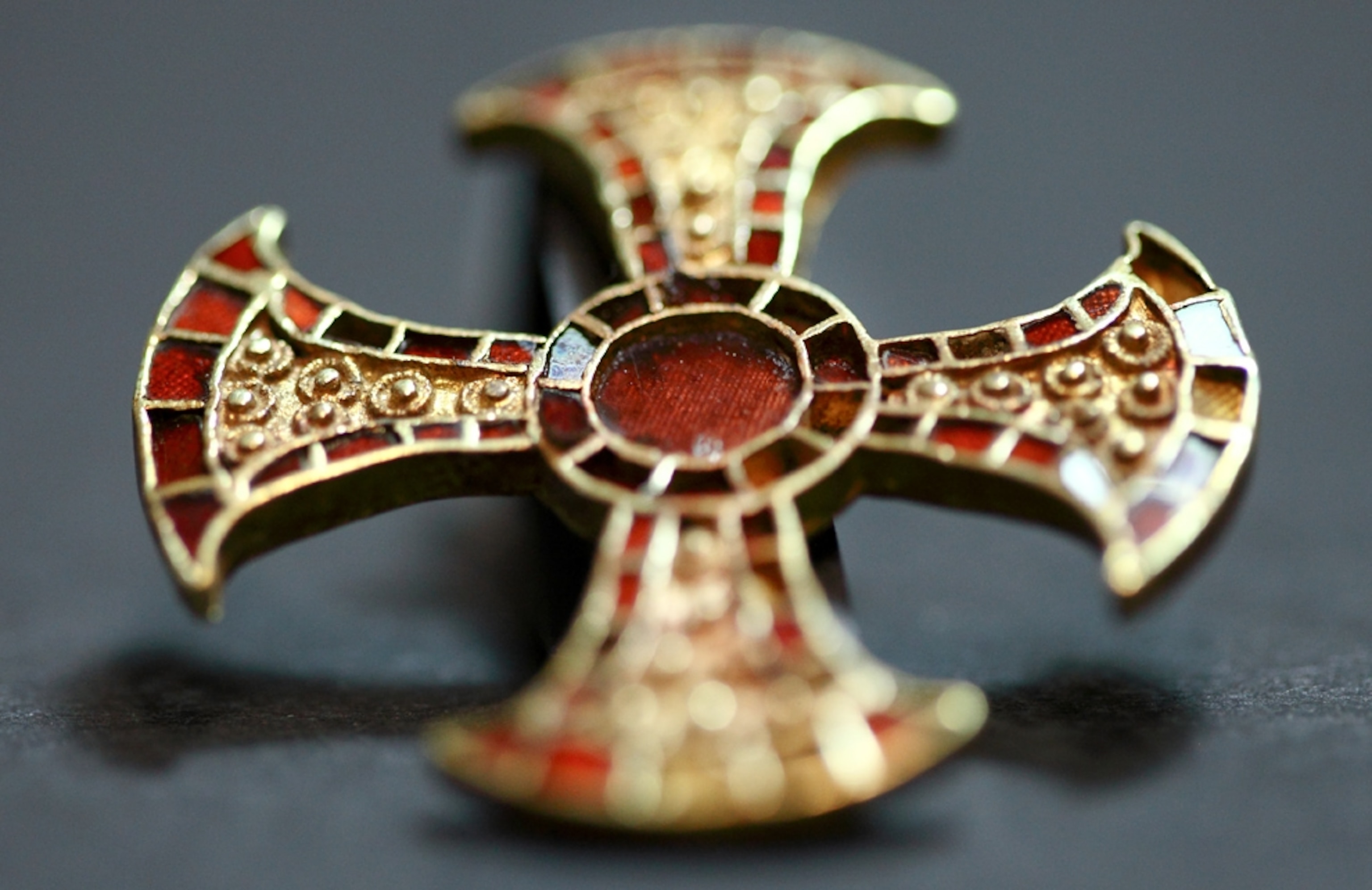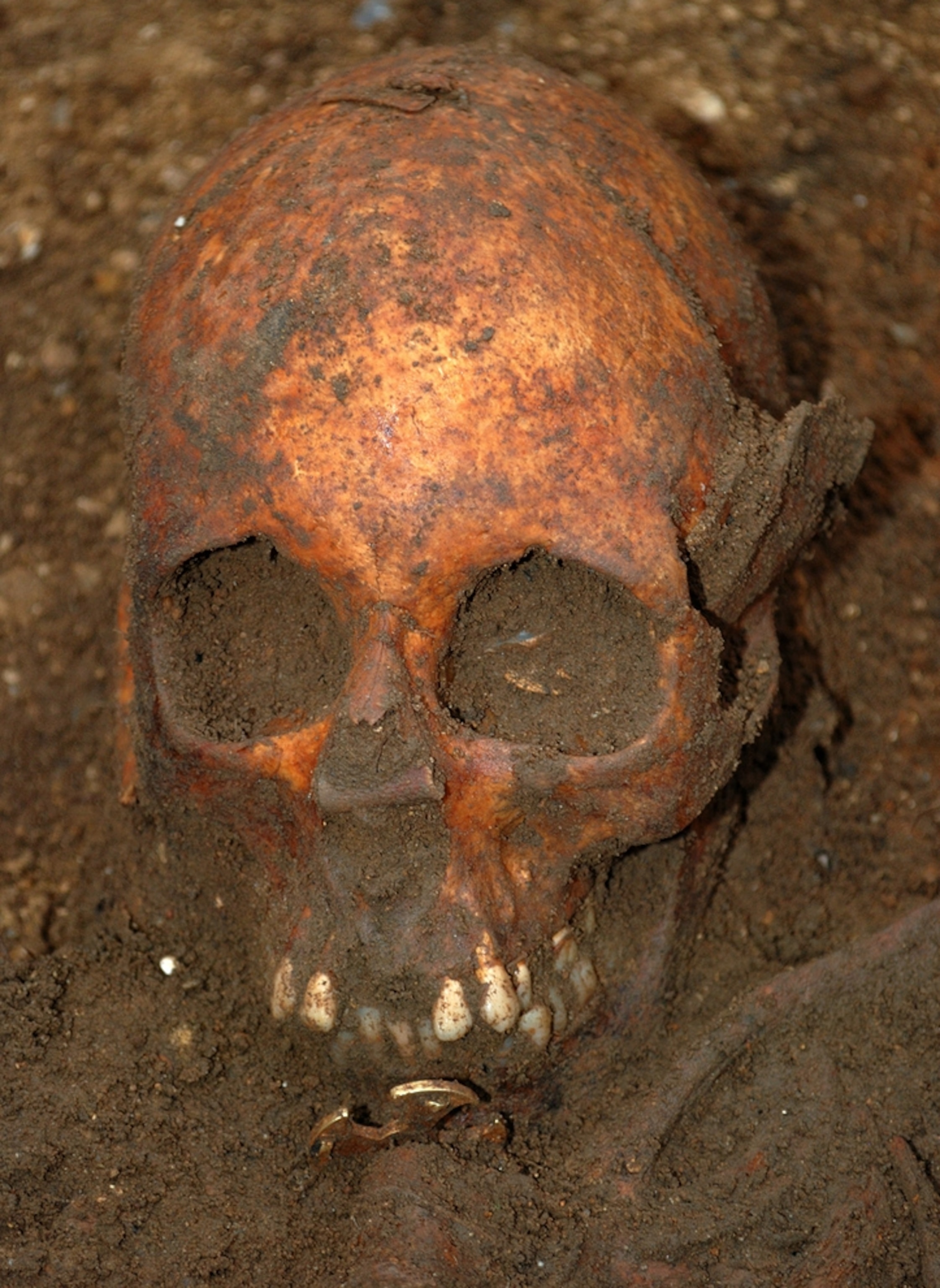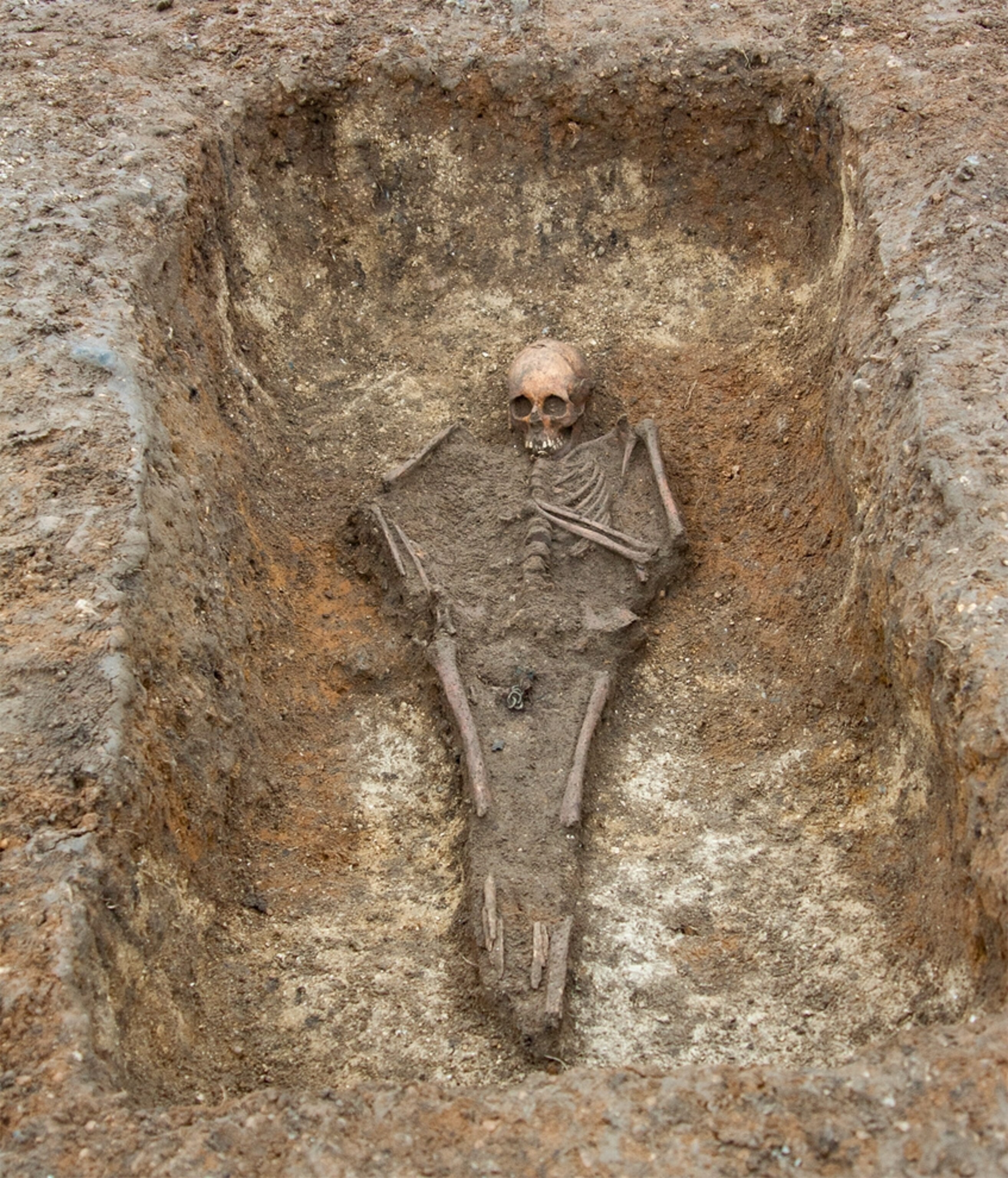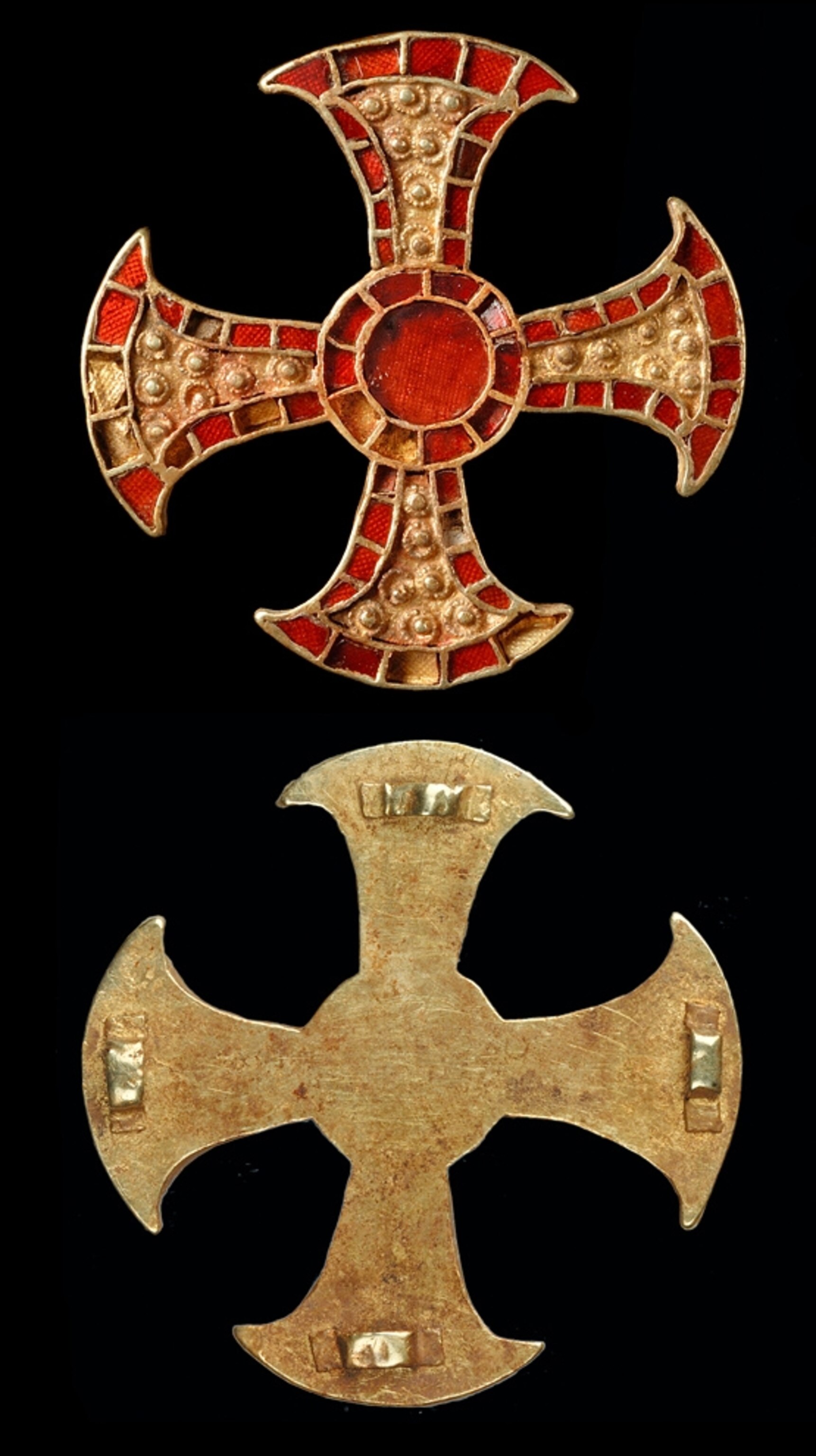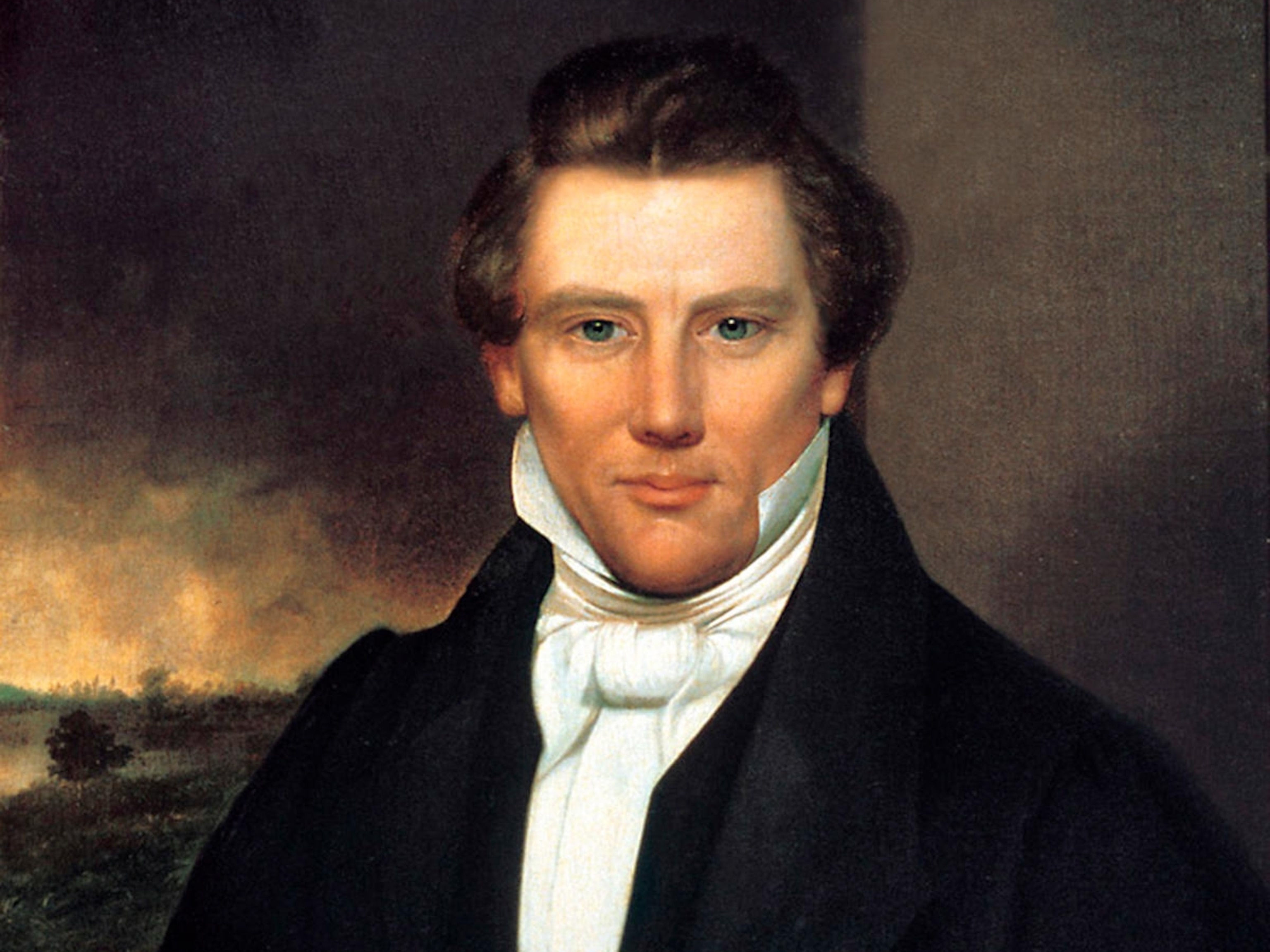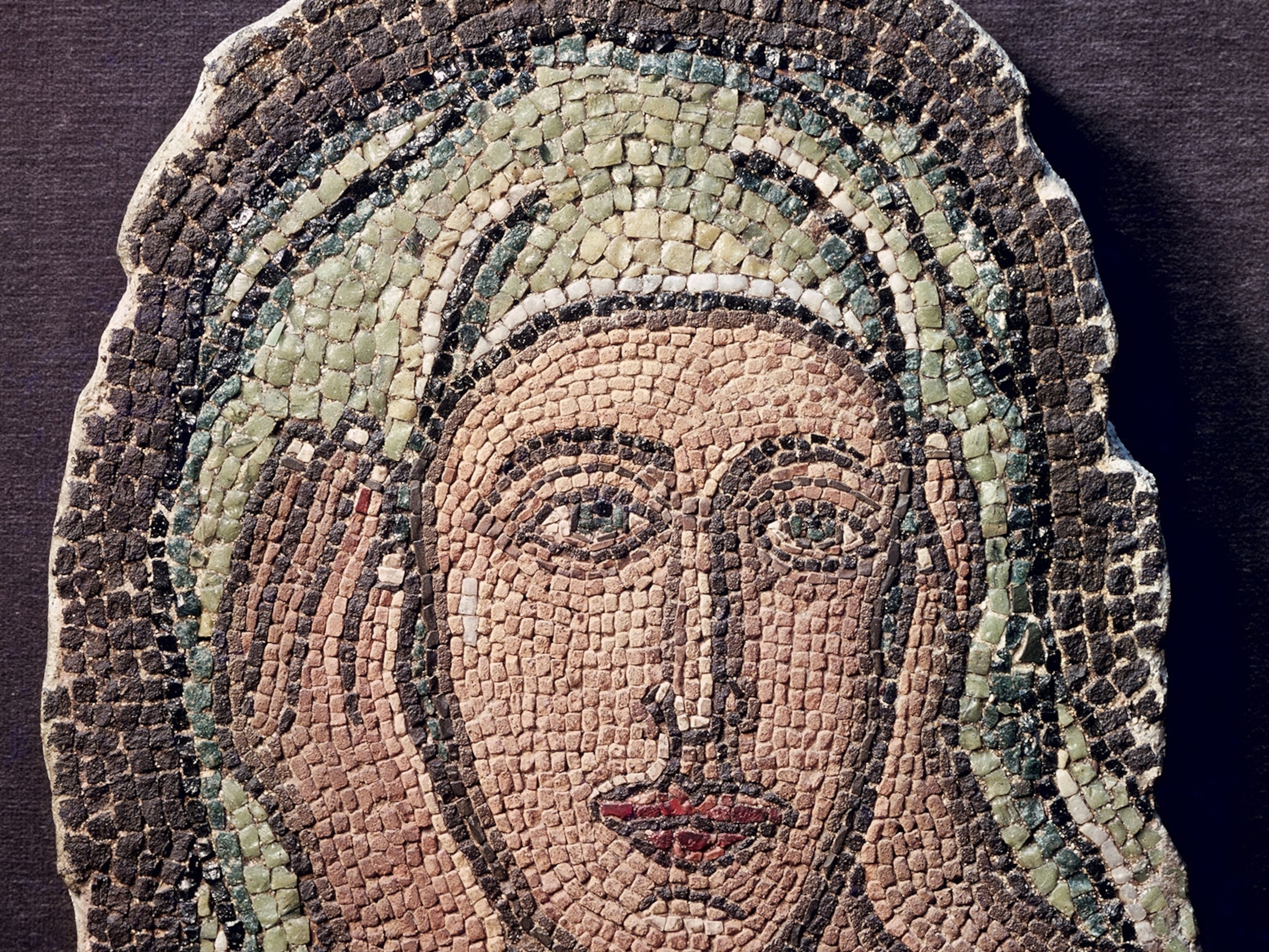Photograph courtesy University of Cambridge
Photos: Bejeweled Anglo-Saxon Found in Christian "Burial Bed"
A young woman buried with an exquisite gold-and-garnet cross is offering clues to the earliest days of the English church, scientists say.
March 22, 2012
